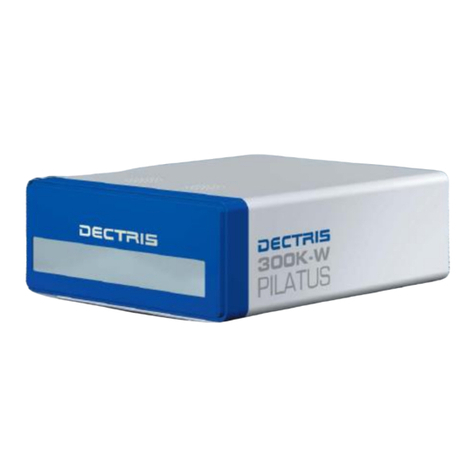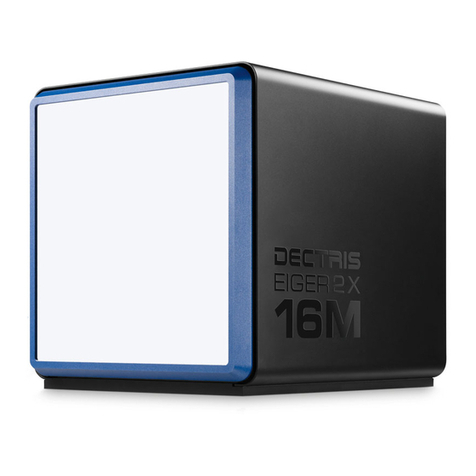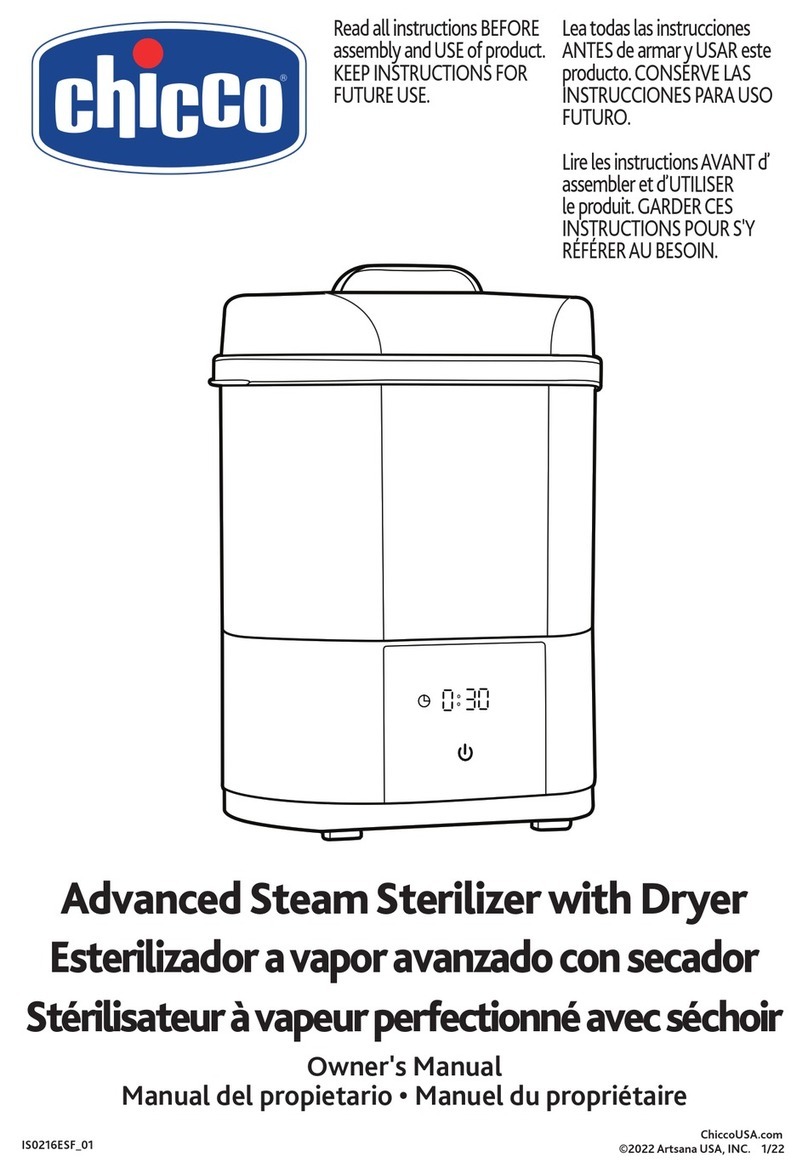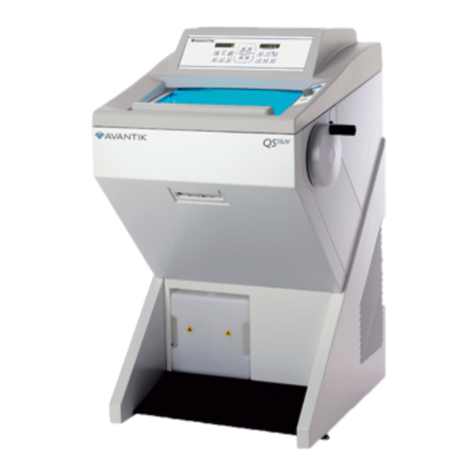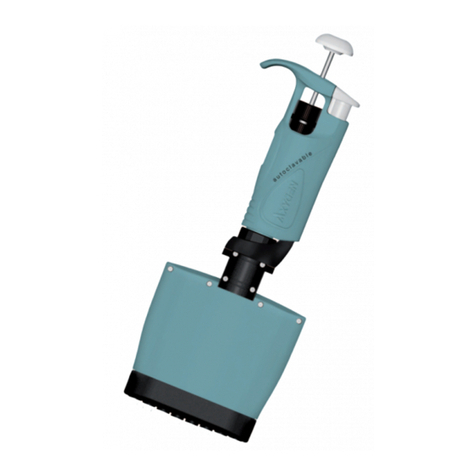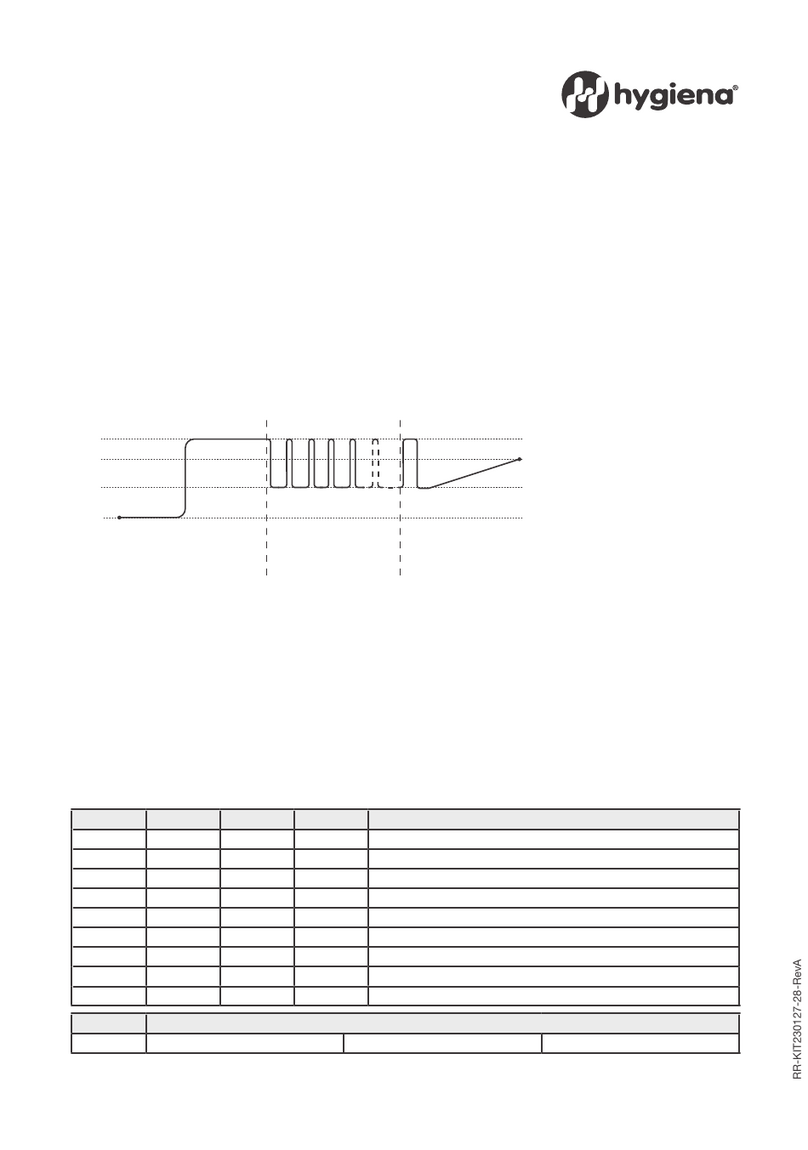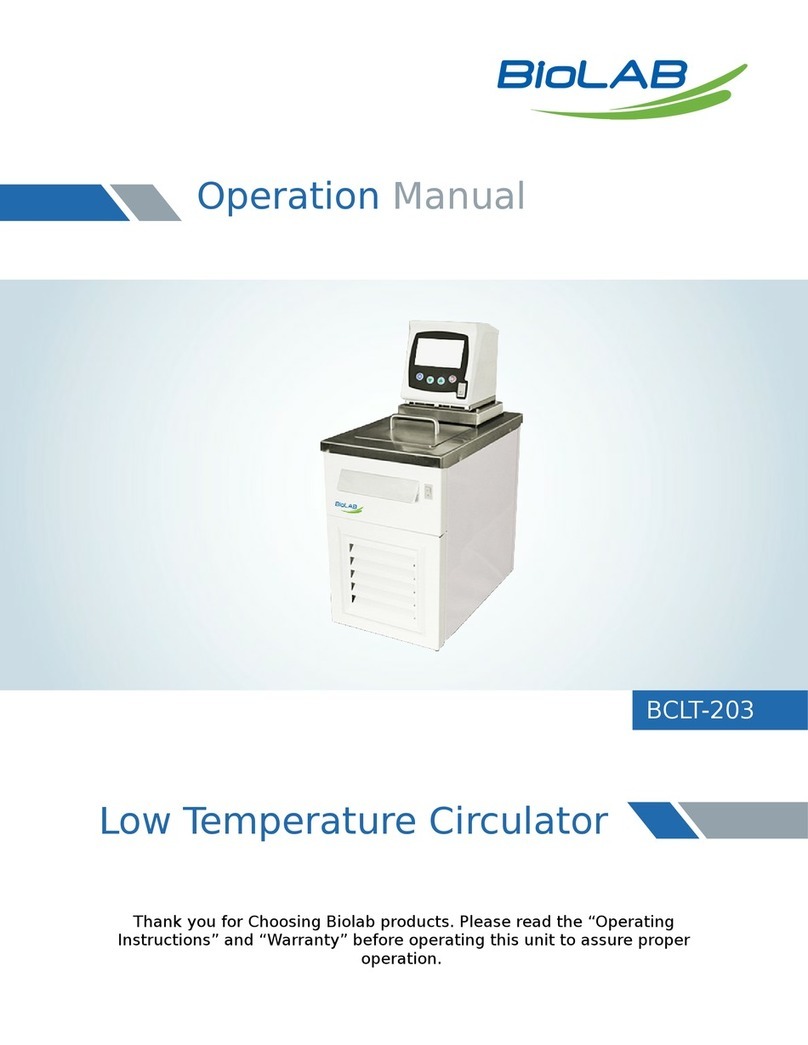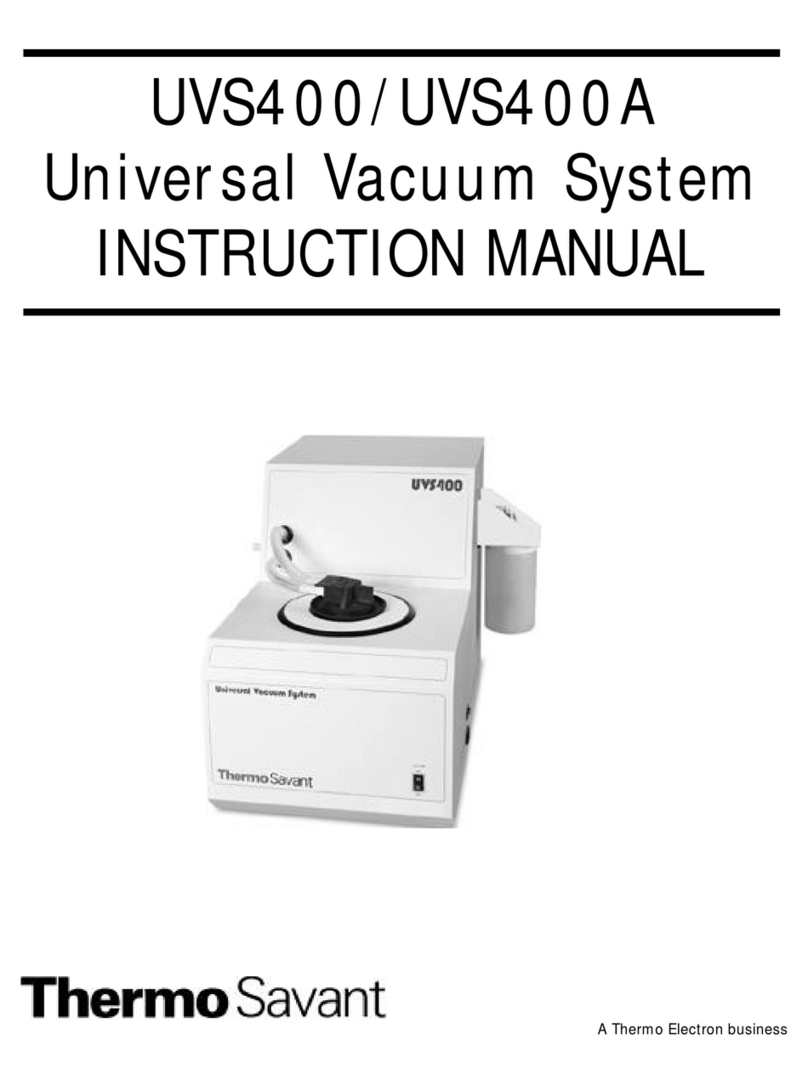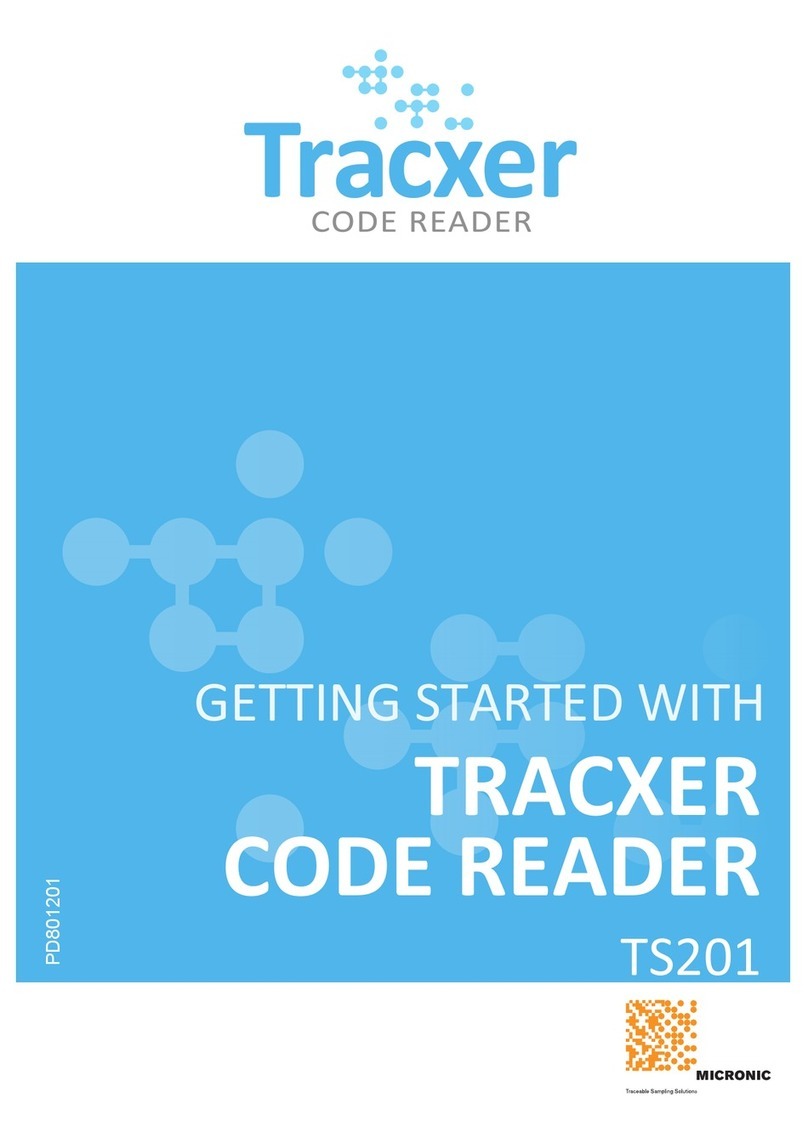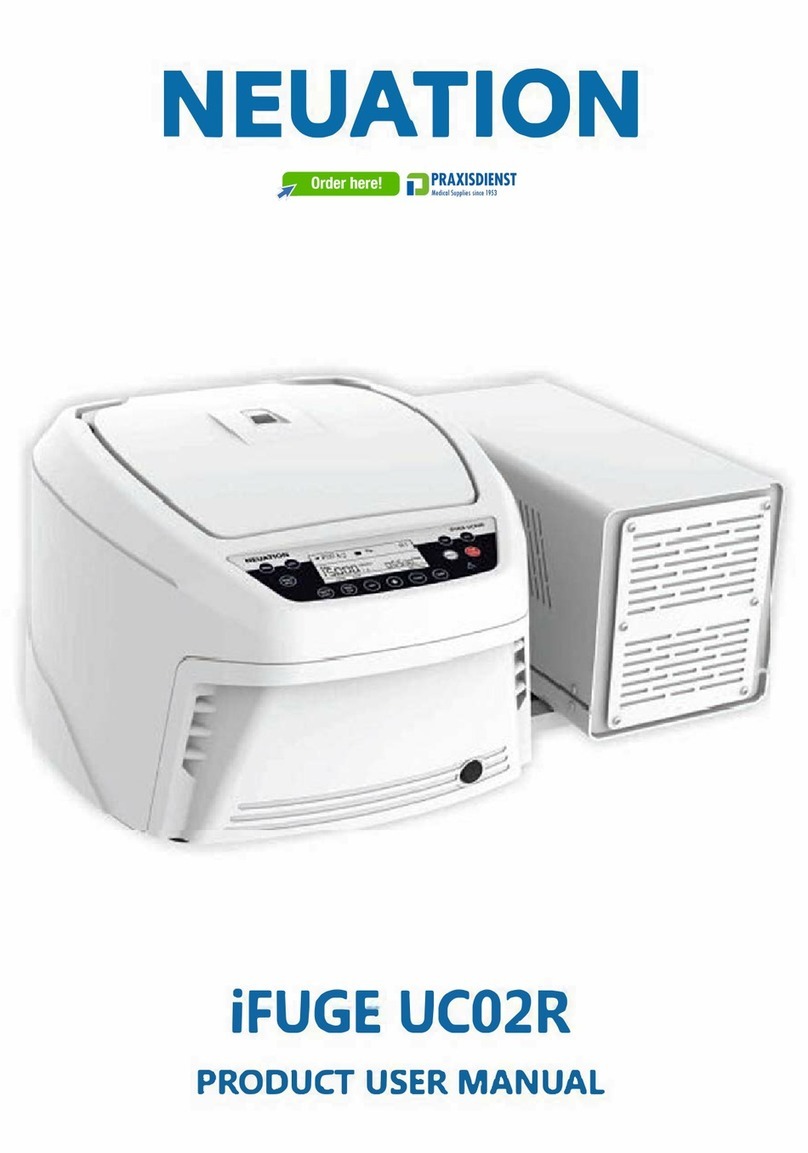Dectris MYTHEN2 User manual

0/50
User Manual MYTHEN2 Detector Systems Version 8
DECTRIS Ltd.
5405 Baden-Daett wil
Swit zerland
www.dectris.com
User Manual
MYTHEN2 Detector Systems
Version 8

1/51
User Manual MYTHEN2 Detector Systems Version 8
Document Version V8
© Copyright 2020
DECTRIS Ltd

i/50
User Manual MYTHEN2 Detector Systems Version 8
Contents
1. General Information .............................................................................................................. 1
1.1. Contact and Support ......................................................................................................... 1
1.2. Explanation of Symbols .................................................................................................... 1
1.3. Explanation of Terms ........................................................................................................ 2
1.4. Warranty Information ........................................................................................................ 2
1.5. Disclaimer .......................................................................................................................... 2
2. Safety Instructions ................................................................................................................ 4
3. System Description ................................................................................................................ 5
3.1. Hybrid Photon Counting (HPC) Technology .................................................................... 5
3.1.1. Overview .......................................................................................................................................... 5
3.1.2. Basic Functionality ......................................................................................................................... 6
3.1.3. Single Photon Counting ................................................................................................................. 7
3.2. Detector Settings ............................................................................................................... 9
3.3. Threshold Trimming ........................................................................................................ 10
3.4. Flat-Field Correction ........................................................................................................ 10
3.5. Count Rate Correction .................................................................................................... 10
4. MYTHEN2 Detector Systems ................................................................................................. 11
5. Technical Specifications ....................................................................................................... 13
5.1. Quantum Efficiency ......................................................................................................... 13
5.2. MYTHEN2 Detector Module ............................................................................................. 13
5.3. Detector Control System DCS4 ...................................................................................... 15
6. Detector Dimensions and Connectors .................................................................................... 16
6.1. MYTHEN2 1D .................................................................................................................... 16
6.2. MYTHEN2 1K .................................................................................................................... 17
6.3. Detector Control System DCS4 ...................................................................................... 18
6.4. Connectors and Connecting Cables DCS4 .................................................................... 20
6.4.1. DCS4 Rear Panel .........................................................................................................................20
6.4.2. DCS4 Front Panel ........................................................................................................................21
6.5. Power Supply ................................................................................................................... 23
6.6. Data Cable ........................................................................................................................ 23
6.7. Fixation Kit ....................................................................................................................... 25
7. Installing the Detector System.............................................................................................. 27
7.1. Transport Considerations ............................................................................................... 27
7.2. Mounting the Detector System ....................................................................................... 27
7.3. Setting up the Computer ................................................................................................. 28

ii/51
User Manual MYTHEN2 Detector Systems Version 8
7.4. MYTHEN2 Web Client ...................................................................................................... 29
7.4.1. Software Installation .....................................................................................................................29
7.4.2. Starting the Web Client ................................................................................................................29
7.4.3. Acquisitions with Web Client .......................................................................................................30
7.4.4. Customizing the Acquisition Settings ........................................................................................32
7.4.5. Complete Documentation ............................................................................................................33
8. Changing Network Settings .................................................................................................. 34
9. Triggering and Gating .......................................................................................................... 36
9.1. Triggering ......................................................................................................................... 36
9.1.1. Overview Trigger Modes .............................................................................................................36
9.1.2. Internal Trigger ..............................................................................................................................37
9.1.3. Single Trigger ................................................................................................................................37
9.1.4. Activating the Trigger Mode ........................................................................................................38
9.1.5. Trigger Level and Time Jitter ......................................................................................................39
9.1.6. Delay Before Frame .....................................................................................................................39
9.1.7. Trigger Signal and Multiple Readouts .......................................................................................40
9.1.8. Continuous Trigger .......................................................................................................................41
9.2. Gating/ External Enable .................................................................................................. 43
9.2.1. Activating the Gating Mode .........................................................................................................43
10. Bad Channels ...................................................................................................................... 45
11. Firmware Update ................................................................................................................ 46
12. Web Interface Update ......................................................................................................... 48
13. Factory Reset ...................................................................................................................... 49
14. Temperature and Humidity Control ....................................................................................... 50
15. Cleaning and Maintenance ................................................................................................... 51
16. Appendix ............................................................................................................................ 52
16.1. Referenced Documents ................................................................................................... 52

iii/51
User Manual MYTHEN2 Detector Systems Version 8
Document History
Current Document
Version
Date
Status
Prepared
Checked
Released
8
24.04.2020
released
LG
RM, LW
LW
Changes
Version
Date
Changes
7
09.04.2019
Updated Corporate Design
5
30.10.2017
Updated web links
4
28.11.2016
Updated references
3
05.07.2016
Support for editing the bad channel files
Custom flat-field upload explanation
2
27.10.2015
Major update and documentation rework
Document versioning system changed
Contact information updated
Figure 43 exchanged
Module and DCS4 photos updated (screw lock cable
and fixation kit)
1
04.09.2014
Old versions

1/50
User Manual MYTHEN2 Detector Systems Version 8
1. General Information
1.1. Contact and Support
Address:
DECTRIS Ltd.
Taefernweg 1
5405 Baden-Daettwil
Switzerland
Phone:
+41 56 500 21 02
Fax:
+41 56 500 21 01
Homepage:
http://www.dectris.com/
Email:
support@dectris.com
Should you have questions concerning the system or its use, please contact us via telephone, e-mail or
fax.
1.2. Explanation of Symbols
Symbol
Description
Important or helpful notice
Caution. Please follow the instructions carefully to prevent equipment damage or
personal injury.
DC-current
AC-current
Ground
Functional earth

2/51
User Manual MYTHEN2 Detector Systems Version 8
1.3. Explanation of Terms
Term
Description
ASIC
Application-Specific Integrated Circuit
DAC
Digital Analog Converter
GUI
Graphical User Interface
DCS4
Detector Control System for up to 4 detector modules
Detector Module
The smallest fully functional unit of the detector (1280 or 640 channels for
MYTHEN2)
P2P
Peer to Peer connection (fixed IP address)
MCB
Module Control Board
FIFO
Storage working according to First In – First Out
keV
Kilo electron Volt
1.4. Warranty Information
Should your detector require warranty service, contact DECTRIS for further information. Before shipping the
system back, please contact DECTRIS to receive the necessary transport and shipping information. Make
sure that the original packaging is used when returning the system.
Do not ship the system back before you receive the necessary transport and shipping
information.
When returning the detector system for repair, be sure to fill out and include the service form at the back of
this document to provide the support division with the necessary information.
1.5. Disclaimer
DECTRIS has carefully compiled the contents of this manual according to the current state of knowledge.
Damage and warranty claims arising from missing or incorrect data are excluded.
DECTRIS bears no responsibility or liability for damage of any kind, also for indirect or consequential
damage resulting from the use of this system.
DECTRIS is the sole owner of all user rights related to the contents of the manual (in particular information,
images or materials), unless otherwise indicated. Without the written permission of DECTRIS it is prohibited
to integrate the protected contents in this publication into other programs or other websites or to use them
by any other means.

3/51
User Manual MYTHEN2 Detector Systems Version 8
DECTRIS reserves the right, at its own discretion and without liability or prior notice, to modify and/or
discontinue this publication in whole or in part at any time, and is not obliged to update the contents of the
manual.

4/51
User Manual MYTHEN2 Detector Systems Version 8
2. Safety Instructions
Please read these safety instructions before operating the detector system.
Before turning the power supply on, check the supply voltage against the label on the power supply.
Using an improper main voltage will destroy the power supply and damage the detector.
Use only the power supply delivered by DECTRIS
Power down the detector system before connecting or disconnecting any cable.
Make sure the cables are connected and properly secured.
Do not use any other cables than delivered by DECTRIS
Avoid pressure or tension on the cables.
The detector system should have enough space for proper ventilation. Operating the detector
outside the specified ambient conditions could damage the system.
The detector is not specified to withstand direct beam at a synchrotron. Such exposure will damage
the exposed pixels.
Place the protective cover on the detector when it is not in use to prevent the detector from
accidental damage.
Opening the detector or the power supply housing without explicit instructions from DECTRIS will
void the warranty.
Do not install additional software or change the operating system.
Do not touch the entrance window of the detector.
Do not connect any device to the USB plugs of the DCS4 except the detector modules.
Do not connect the detector module to any other USB device than the DCS4.

5/51
User Manual MYTHEN2 Detector Systems Version 8
3. System Description
3.1. Hybrid Photon Counting (HPC) Technology
3.1.1. Overview
All X-ray detector systems produced by DECTRIS operate in single-photon-counting mode, and are based
on Hybrid Photon Counting (HPC) technology.
The main difference to traditional detectors is that the X-rays are directly converted into an electric charge
in the silicon sensor (Figure 1). The signal is then processed in the CMOS readout chips that are directly
connected to the senor pixels/stripes.
This technology has no dark current or readout noise and allows for a high dynamic range (1:16’777’216
(24 bits) per channel per image), a short readout time (< 0.1 ms), A higher frame rate (up to 1000*
frames/s) and an excellent spatial resolution (channel width 50 µm). Three available silicon sensor
thicknesses (320 µm, 450 µm or 1000 µm) and two strip lengths (4 mm or 8 mm) ensure optimal quantum
efficiency for experiments in the energy range from 4 – 40** keV (Figure 2, Table 1). However, detectors
can be used for higher X-ray energies with the corresponding lower efficiency. In order to handle the high
flux of modern synchrotron light sources, count rates > 106 counts/s/channel are supported. However, the
detector cannot withstand a direct synchrotron beam due to potential radiation damage.
*Frame rates up to 1000 Hz are possible only for the MYTHEN2 X-series (synchrotron applications).
**In order to optimize signal-to-noise ratio, energies as low as 4 keV can be reached only with sensor
geometry corresponding to 320 m thickness and 4 mm strip length (Table 1).
FIGURE 1: PRINCIPLE OF DIRECT X-RAY DETECTION BY HPC DETECTORS. CONVERSION OF X-RAY INTO AN ELECTRICAL CHARGE IN THE
SENSOR PIXEL/STRIPE.
+
-
X-ray
Sensor Pixel

6/51
User Manual MYTHEN2 Detector Systems Version 8
TABLE 1: ENERGY AND THRESHOLD RANGES FOR THE FOUR AVAILABLE COMBINATIONS OF SENSOR THICKNESS AND STRIP LENGTH.
320 µm x 4 mm
320 µm x 8 mm
450 µm x 8 mm
1000 µm x 8 mm
Energy [keV]
4.0 – 40.0
5.0 – 40.0
6.6 – 40.0
7.4 – 40.0
Threshold [kev]
3.5 – 20.0
4.5 – 20.0
5.5 – 20.0
6.0 – 20.0
3.1.2. Basic Functionality
Hybrid Photon Counting (HPC) technology enables direct detection of X-rays, by converting them into
charge. This process requires a specific sensor and readout chip.
All DECTRIS detectors are based on the HPC technology. They are composed of a segmented silicon or
CdTe sensor and the corresponding ASIC readout chip.
In the case of MYTHEN2, the sensor is a one-dimensional array of silicon micro strips (channels). These
are reverse biased, depleted pn-junctions that are processed in high-resistivity silicon. Each detecting unit
(each strip) in such a silicon array is connected to its corresponding readout channel, designed with
advanced CMOS technology. Connection is based on a one-by-one wire-bonding technique.
In comparison with traditional detector technologies, the great advantage of HPC technology is that this
approach is optimized for X-rays and the sensors exhibit high quantum efficiency for a wide range of X-ray
energies. Moreover, the small size of the channel and of the interconnection results in a very low
capacitance, which has the beneficial effect of reducing the noise and power consumption of the channel
readout electronics.
Standard technologies used for the silicon sensor and the CMOS readout chips guarantee the highest
quality of the product.
FIGURE 2: QUANTUM EFFICIENCY AS A FUNCTION OF X-RAY ENERGY, CALCULATED FOR THREE SENSOR THICKNESSES

7/51
User Manual MYTHEN2 Detector Systems Version 8
Single Photon Counting
Single-photon counting describes a mode in which signals are processed in the readout chip (Figure 3). In
the following paragraph, the principle of single-photon counting will be described on the example of
MYTHEN2 (micro strip detector).
A hybrid channel of the MYTHEN2 detector comprises a charge-sensitive preamplifier (Figure 3) which
amplifies the collected charge signal, generated in the sensor by the incoming X-ray. The preamplifier is
followed by two shaping gain stages and a comparator with a globally adjustable threshold (comparator in
Figure 3). The comparator produces a digital signal if the incoming charge exceeds the pre-defined
threshold. The output signal of the comparator feeds a 24-bit counter, which leads to completely digital
storage and noiseless readout of the number of detected X rays in each channel.
The globally set threshold can exhibit some channel-to-channel variations. In order to correct for these
variations, each comparator threshold is adjusted by six individual trim bits. This process is called
“Threshold trimming” and it is described in more detail in the Section 3.3 Threshold Trimming.
In order to clarify the functional principle of single-photon-counting detectors, comparison with the
integrating mode of e.g. CCD detectors is presented in the following paragraph, and depicted in Figure 4.
The first plot in Figure 4 shows the X-ray photons deposited on the sensor surface randomly in time. In the
second plot, corresponding charge pulses are depicted. The green line corresponds to user-defined
threshold that acts as an acceptance criterion. The third plot illustrates the operating principle of integrating
detector: all charges collected over a certain time, including the leakage current of the sensor, are
integrated. Compared to this, plot four demonstrates the functional principle of the single-photon-counting
mode. Only the charge pulses that are higher than the pre-defined comparator threshold cause a pulse at
the output of the comparator. This pulse is then counted by the counter. The readout of the counters is
done digitally and has no impact on the result of the measurement.
FIGURE 3: DESIGN OF THE READOUT ELECTRONICS OF EACH CHANNEL.

8/51
User Manual MYTHEN2 Detector Systems Version 8
A big advantage of the single-photo-counting mode with the adjustable threshold is that the background
and fluorescence can be successfully suppressed once the threshold is properly set (plot two in Figure 4).
In principle, there are only two possibilities of background counts: (i) background due to the high energy
cosmic counts, or (ii) noise counts that are caused by the readout chip intrinsic electronic noise. The former
cannot be circumvented, and the latter could be suppressed by setting the threshold appropriately.
However, if the X-ray energy is quite low compared to the electronic noise level, the threshold has to be set
even lower, and therefore noise counts have to be taken into account.
FIGURE 4: DETECTION OF X-RAYS: COMPARISON OF THE SINGLE-PHOTON-COUNTING MODE AND INTEGRATING MODE.

9/51
User Manual MYTHEN2 Detector Systems Version 8
3.2. Detector Settings
The analog part of the readout electronic of each channel is shown in Figure 3, Section 0. The gain and
therefore the shaping time of each amplifier stage can be adjusted by the globally set DAC values: Vrgpr,
Vsh1 and Vsh2. A high gain is related with a longer shaping time τs, resulting in a low maximal counting rate.
Furthermore, the gain is related to the electronic noise of the readout chip. A high gain correlates with a
lower intrinsic electronic noise level and therefore enables to measure lower X-ray energies.
The MYTHEN2 software will always chose the optimal gain settings based on the threshold energy in use
(Figure 5). For a given threshold energy, the gain is set as low as the electronic noise level allows to. This
effectively suppresses noise counts from the electronics while keeping the shaping time as low as possible
and maximizing the count rate of the detector.
In most cases, for optimal results the user only specifies the X-ray energy and lets MYTHEN2 software
choose a suitable energy threshold. For energies above molybdenum (17.8 keV), the threshold energy is
half of the X-ray energy. Below 17.8 keV, the threshold energy is set according to Figure 5.
The threshold can be customized by an expert user. In that case, the user specifies the X-ray energy and
threshold energy independently.
F
IGURE
5:
T
HRESHOLD ENERGIES FOR ENERGY RANGE FROM
4
TO
40
KE
V
FOR
8
MM WIDE SENSORS
(
BLACK
)
AND
4
MM WIDE
SENSORS (RED).

10/51
User Manual MYTHEN2 Detector Systems Version 8
3.3. Threshold Trimming
The analog part of the readout electronics of each channel is shown in Figure 3, Section 0. The globally
adjustable threshold of the comparators of a module is set by a 14-bit DAC, placed on the module control
board. Therefore, all channels of a module have the same threshold in DAC values. However, due to the
transistor variations caused by the production process of the CMOS wafers of the readout chips, the
threshold varies between individual channels in terms of X-ray energy. In order to minimize the threshold
dispersion on the module, a threshold equalization technique (trimming) is applied, using the internal 6-bit
DAC of each channel. In principle, the trimming is a kind of fine adjustment of the comparator thresholds
on a channel-by-channel basis.
A correct trimming of the detector reduces the threshold dispersion by a factor of about 10. Since the
channel-to-channel variations depend on the energy threshold, trim files for different energy thresholds are
delivered with each MYTHEN2 detector system. The MYTHEN2 control software ensures that optimal
settings for a chosen X-ray energy are chosen automatically
3.4. Flat-Field Correction
Variations in (i) the charge collection efficiencies of the sensor and (ii) geometrical effects (e.g. channels
next to the edge of the sensor collect charge from a larger sensor volume) cause differences in the number
of counted X-rays on a channel-to-channel basis. Since these variations are stable in time, they can be
corrected. The flat-field correction is based on uniformly illuminated images with high statistics. DECTRIS.
provides flat-field files for typical monochromatic X-ray energies, which are used to correct acquired
images. In some cases it can be beneficial to record setup specific flat-fields. Please contact DECTRIS
support for guidelines on how to record customer specific flat-fields and upload them to the Mythen2
system.
3.5. Count Rate Correction
At high fluxes, a photon-counting system will not detect a certain fraction of photons due to pulse pile-up.
The count rate behavior, i.e. the observed count rate as a function of incoming rate, of the MYTHEN2
detector can be modeled by an ideal, paralyzable detector, for which each photon leads to a dead-time of
fixed length. In this model, the observed rate Nobserved depends on the incoming rate Nincoming according to:
=
where τ is the detector dead time, which depends on the shaping time.
As explained above, the choice of gain (and therefore the shaping time) is based on the threshold energy.
Therefore, the dead time depends on the threshold energy. The exact values can differ from module to
module, especially for modules with thicker sensors. It should be noted that when applying a rate correction
based on the above formula, the incoming rate can still be determined up to a rate about 15 times higher
than the recommended rate.

11/51
User Manual MYTHEN2 Detector Systems Version 8
4. MYTHEN2 Detector Systems
The MYTHEN2 detector family comprises MYTHEN2 R laboratory series and MYTHEN2 X series for
synchrotron use. Difference between the two is the maximal frame rate that can be obtained. For X systems,
maximal frame rate corresponds to 1000 Hz, and for R systems 25 Hz. Both R and X series are available in
various sensor geometries (Table 2).
This manual covers both systems (X, R) and all sensor geometries. For simplicity, in most cases MYTHEN2
R 1D figures will be used to represent the complete MYTHEN2 family of detectors.
TABLE 2: MYTHEN2 DETECTOR FAMILY AND AVAILABILITY OF VARIOUS COMBINATIONS OF SENSOR THICKNESS AND STRIP LENGTH.
Sensor Geometry
MYTHEN2 R
MYTHEN2 X
1D
1K
1D
1K
Number of channels per module
640
1280
640
1280
Sensor thickness/ strip length
320 µm / 4 mm
Yes
No
Yes
No
320 µm / 8 mm
No
Yes
No
Yes
450 µm / 8 mm
Yes
Yes
Yes
Yes
1000 µm / 8 mm
No
Yes
No
Yes
All MYTHEN2 detector systems consist of:
1 – 4 detector modules (depending on the system type)
Detector Control System (DCS4)
Fixation kit
Power supply for the DCS4
USB 3.0 data cable(s)2 with a screw-lock for connecting the detector modules to DCS4
Fixation kit can be mounted on DCS4 to ensure fixed position of the USB cable on the DCS4. In order to
make figures simple, in this manual DCS4 will be represented without the fixation kit.

12/51
User Manual MYTHEN2 Detector Systems Version 8
1Computer and Ethernet cable are not included in the system.
2USB connectors are used with proprietary protocol.
*USB connectors are used with proprietary protocol.
Connect only devices delivered by DECTRIS. to DCS4. Do not connect any other
devices or USB devices to DCS4 - this might destroy the devices and the DCS4.
“USB Warning: Only approved for DECTRIS modules. Connection of any other devices
will result in damage.”
Always switch off power before connecting or disconnecting a module. Disconnect
DCS4 side plug first.
FIGURE 6: COMPONENTS OF THE MYTHEN2 DETECTOR SYSTEM AND THE COMPUTER1 FOR OPERATING THE DETECTOR SYSTEM.
FIGURE 7: SCHEMATIC OVERVIEW OF MYTHEN2 DETECTOR SYSTEM.

13/51
User Manual MYTHEN2 Detector Systems Version 8
5. Technical Specifications
5.1. Quantum Efficiency
TABLE 3: QUANTUM EFFICIENCY OF MYTHEN2 DETECTOR SYSTEM.
Sensor Thickness 320 µm 450 µm 1000 µm
Quantum efficiency at
(calculated) Ti 4.5 keV** 90% - -
Cr 5.4 keV 93.9% 93.9% 93.9%
Cu 8.0 keV 97.1% 97.9% 98.0%
Mo 17.5 keV 36.8% 47.5% 76.0%
Ag 22.2 keV 19.8% 26.7% 49.8%
** X-ray energies down to 4 keV are available only with 320 m x 4 mm sensors.
5.2. MYTHEN2 Detector Module
The basic unit of the MYTHEN2 detector is a module, comprising 1280 or 640 silicon strips (channels). The
detector module is mounted in a metal housing. The entrance window for X-rays is protected with a cover.
This cover should be removed after mounting the detector system module for regular operation. Once the
cover is removed, the detector window is visible. The sensor is located behind a 12 µm thick aluminized
Mylar® foil to protect it from dust and light.
The detector is connected to Detector Control System DCS4 by USB 3.0 cables, and the DSC4 is connected
to the computer via Ethernet cable (Figure 7, Section 4). The MYTHEN2 detector system offers different
possibilities for communication. The detector system can be operated as a stand-alone device, using a
Web Client. For details, please see Section 7.4 of this document. For integrating the detector system in a
specific environment, the Socket Interface is recommended. For details, please see Socket Interface
Specifications, available from DECTRIS. (see Section 1.1 for support).
a) b)
FIGURE 8: (A) MYTHEN2 1D AND (B) MYTHEN2 1K DETECTOR (COVER REMOVED) WITH POSITION OF CHANNELS.
Channel 639
Channel 0
Channel 1279
Channel 0

14/51
User Manual MYTHEN2 Detector Systems Version 8
Make sure that the detector modules have adequate ventilation.
Make sure that the cover is removed for detecting X-rays.
Do not connect the detector module to any other device than the DCS4 delivered by
DECTRIS. Connecting to different devices than the DCS4 might destroy the devices.
“USB Warning: Only approved for DECTRIS modules. Connection of any other devices
will result in damage.”
TABLE 4: TECHNICAL DATA OF THE MYTHEN2 DETECTOR MODULE.
Sensor material
Silicon
Sensor
Reverse biased pn-junction array
Detection principle
Single photon counting
Sensor thickness [µm]
320, 450, 1000
Arrangement of channels
One dimensional, single row
Dimensions of one channel
(width x length) [µm]
50 x 8000
50 x 4000*
Readout time [s]
89
Maximal count rate per channel [X-rays/s]
> 1 x 106
Dynamic range [bit]
Selectable: 4, 8, 16, 24
Energy range [keV]
4 – 40**
Point-spread function
1 channel
Cooling
Air cooled, thermal stabilization is recommended
for Ethreshold ≤ 4.5 keV
CE certification
Yes
Connector
USB 3.0 micro-B female (with a screw-lock)
Housing
1K
1D
Number of channels/module
1280
640
Sensor thickness [µm]
320, 450, 1000
320, 450
Sensitive area
(width x length) [mm]
64 x 8
32 x 8, 32 x 4*
Power consumption [W]
< 1.7
< 1.7

15/51
User Manual MYTHEN2 Detector Systems Version 8
Dimensions (WHD) [mm]
70 x 62 x 22
38 x 62 x 22
Weight [g]
180
107
Photo
*Only with 320 m x 4 mm sensors.
** X-ray energies down to 4 keV are available only with 320 m x 4 mm sensors
5.3. Detector Control System DCS4
The Detector Control System DCS4 supplies the detector modules with power and enables the
communication with the detector system. Furthermore, it controls the detector modules and handles the
detector module data.
The detector modules are connected to the DCS4 (Table 5) via USB 3.0 device cables (Figure 7).
A fixation kit is mounted on DCS4 (Figure 6 and Figure 16). This kit enables USB cables to be locked on
the DCS4 side. In the following paragraphs, figures representing DCS4 will be presented without fixation
kit, for clarity.
TABLE 5: TECHNICAL DATA OF THE MYTHEN2 DETECTOR CONTROL SYSTEM DCS4 .
Frame rate [Hz]
1000 (X series); 25 (R series)
External Trigger/Gate
CMOS 5V levels
Power consumption DCS4 [W]
6.25
Cooling
Air cooled
Dimensions (WHD) [mm]
111 x 31 x 160
Weight [kg] excl. detector module and data cabeling
0.42
Operation voltage DCS4 [V DC]
12
Power consumption of detector system consisting of DCS4 and 4
detector modules [W]
15
Power supply
external power supply 12 V DC / 5 A
Table of contents
Other Dectris Laboratory Equipment manuals
Popular Laboratory Equipment manuals by other brands
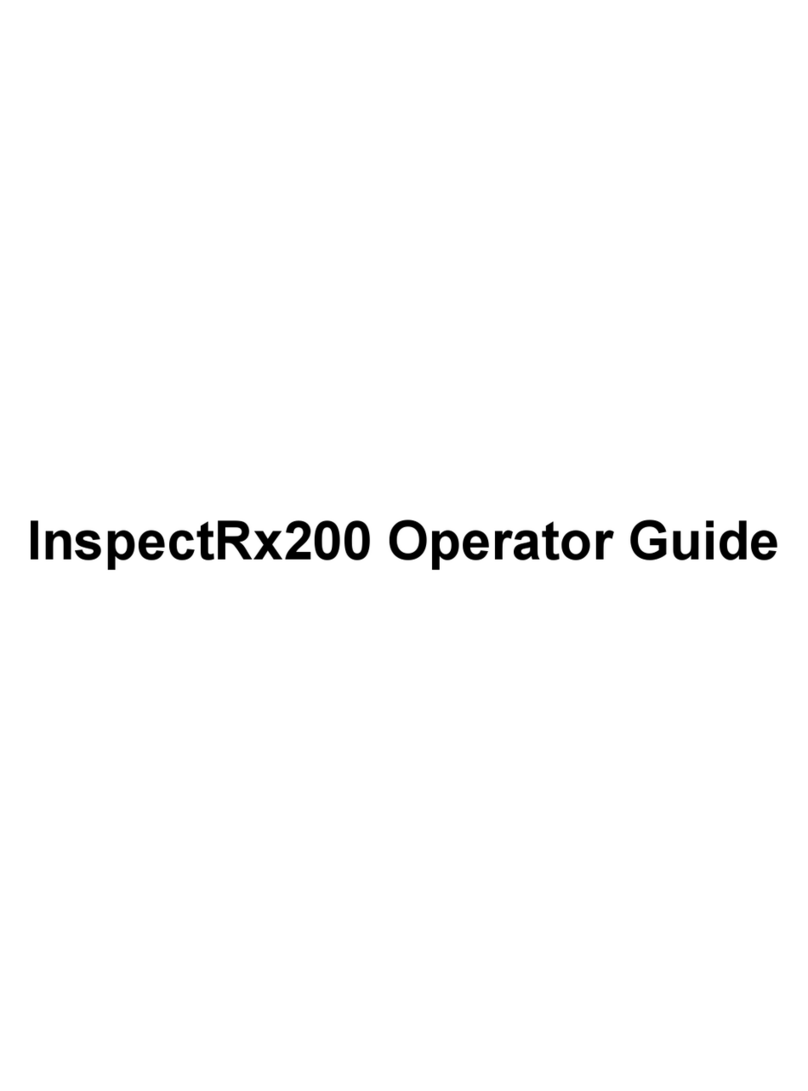
Parata
Parata InspectRx200 Operator's guide
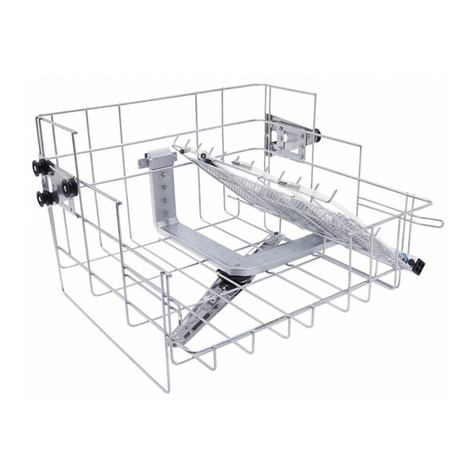
Miele professional
Miele professional A 104 operating instructions
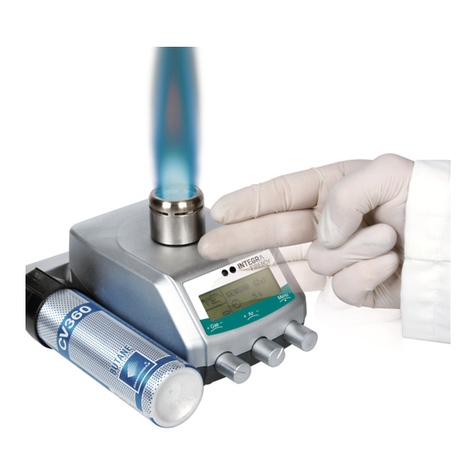
Integra
Integra Fireboy Plus 144000 operating instructions
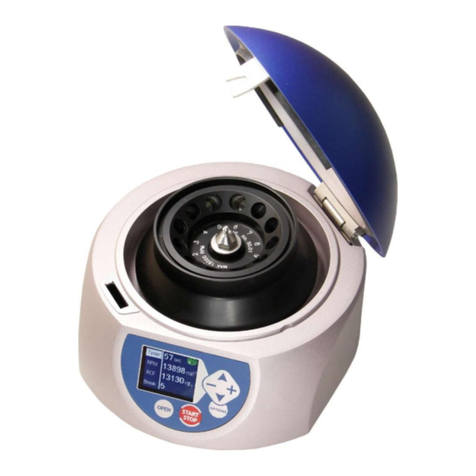
Elmi
Elmi CM-50 user manual
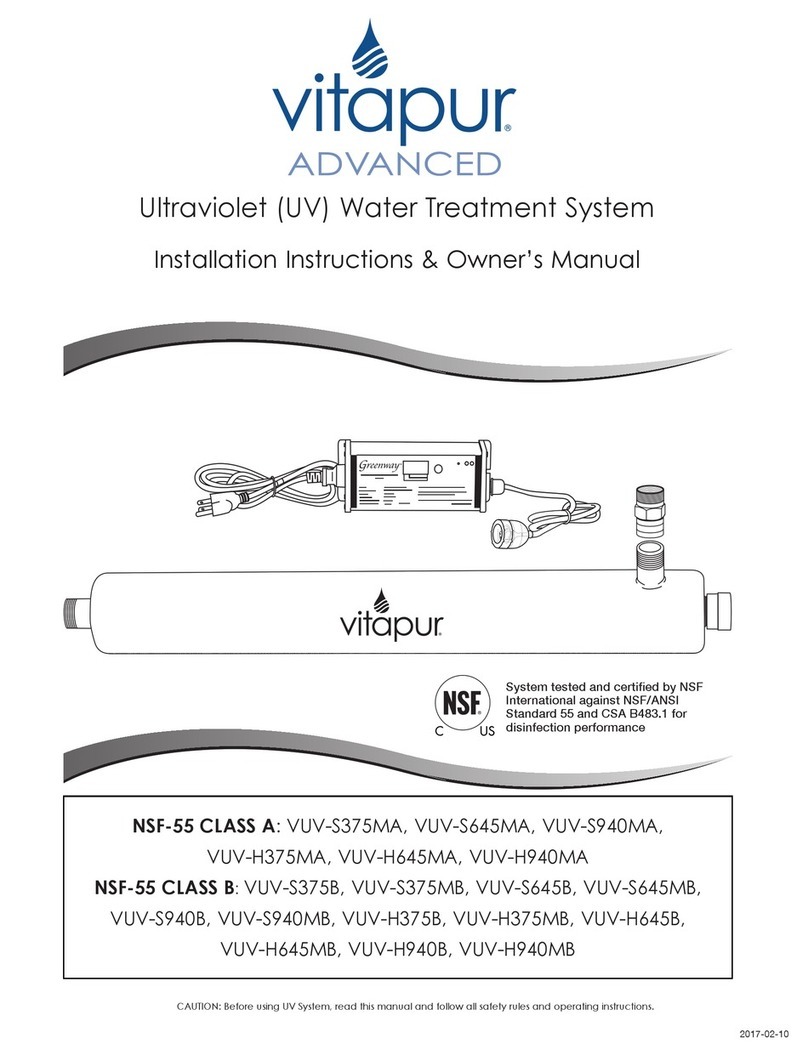
vitapur
vitapur VUV-S375MA Installation instructions & owner's manual
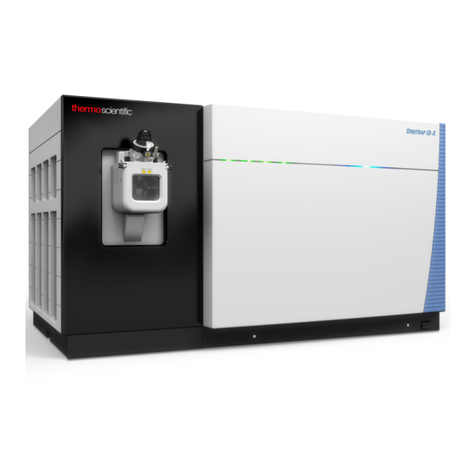
Thermo Scientific
Thermo Scientific Orbitrap Fusion Lumos Getting started guide
